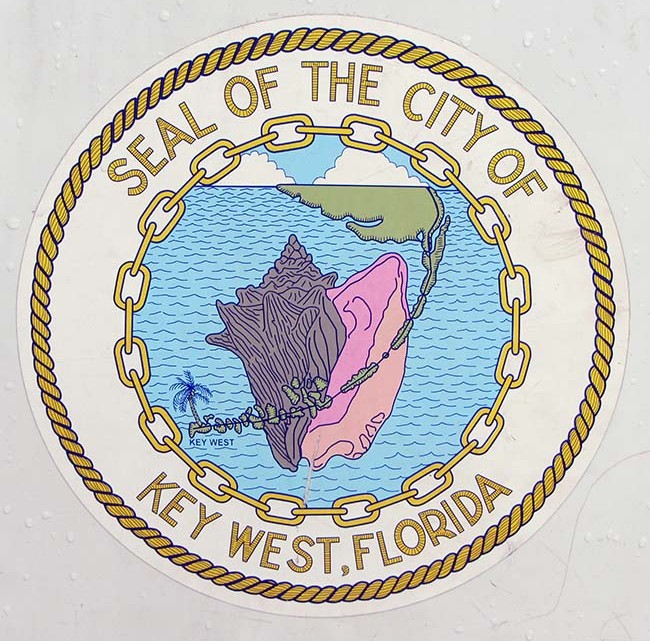City hammers out new lease for Garrison Bight liveaboards
BY PRU SOWERS
KONK LIFE STAFF WRITER
Key West residents living on their boats in Garrison Bight came away half-satisfied recently when city commissioners approved a new lease for the liveaboards.
Negotiations had been on-going for several months, as dozens of the boat and floating home owners had objected to the initial proposed lease, the first new dockage agreement since 2003. City Manager Jim Scholl delayed implementing the new lease for four months, giving marina officials and boat residents time to hash out compromises on several of the issues. But there were two last, significant items where city staff and the liveaboards could not agree. One would require liveaboards at Garrison Bight to have a marine survey of their boat or floating home every five years. The other was a $1 per foot assessment for capital improvement and capital maintenance projects, a move that would raise an additional $54,000 a year.
Robert and Marylou Lane, the unofficial spokes-couple for Bight liveaboards, argued that the $1/foot increase was not designated for specific marina improvement projects. Instead it would go into the Bight operational fund for unnamed future use. Robert Lane said that a portion of the approximately $450,000 collected in rent from liveaboards that is normally supposed to go towards capital maintenance projects has often gone unspent in past years.
“We do not need another burden put on the boats at approximately $1 a foot or $42 a month for monies you already have,” he said.
“I want to remind you at Garrison Bight we are a prime example of an affordable lifestyle,” Marylou Lane said, referring to the city’s intensified efforts lately to create more affordable housing. Of the 243 boat slips at the Bight marina, 109 are rented to people who live on their vessels.
Commissioner Sam Kaufman, who represents the district where Garrison Bight is located, said that the just-approved fiscal 2019 city budget does not include a line item for how the extra $54,000 raised by the assessment would be used.
“If you remember from the July workshop on the budget, there is no inclusion of a dollar per foot in our budget. There is no identified expenditures for that one dollar per foot,” he told his fellow commissioners.
But Doug Bradshaw, Key West Director of Port and Marine Services, argued that the $1 per foot assessment is badly needed. While there may not be a specific project identified for the new revenue, the Bight’s reserve fund is hovering around zero because of expenses related to cleaning up after Hurricane Irma last year. The Bight and next-door charter boat row, both city-owned properties, sustained extensive damage to the docks, walkways and railings.
While fees at Garrison Bight bring in between $400,000 and $450,000 a year, Bradshaw said, repair and maintenance projects often cost millions of dollars.
“We struggle each year to come up with sufficient revenue to cover all our projects, all our expenses, as well as build up reserves,” he said. “When you’re looking at a million, a million and a half project, you do the math. It takes a while to build up that fund.”
Commissioners opted for a compromise, voting to delay the $1 a foot increase for a year. While the Bight residents in the audience grumbled, they accepted the compromise and the extra year they now have to prepare for the expense.
But commissioners sided with marina officials on the second unsolved issue requiring a marine survey every five years. The survey would examine the outside of a boat or floating home to ensure the integrity of the hull and identify other issues that might cause the vessel to sink at its dock. The survey is needed to help the city protect its property, Bradshaw said, adding that it would cost between $350 and $800 depending on the size and condition of the vessel.
“A lot of these vessels are old,” he pointed out.
Marylou Lane argued that even an up-to-date marine survey would not have prevented the sinking of 11 floating homes docked in the Bight during Hurricane Irma. A survey can’t stop a sinking, just like an inspection can’t stop a roof ripping off in hurricane-force winds, she said.
But Mayor Craig Cates, an avid boater himself, said that requiring a survey every five years shouldn’t impose too harsh a financial burden on the marine residents. The survey will not look at a vessel’s engines or electrical systems that more take time and money to access. The survey is basically to ensure the integrity of a boat or floating home’s hull, he said, adding that the insurance policy he has on his recreational boat requires a hull inspection every year.
[livemarket market_name="KONK Life LiveMarket" limit=3 category=“” show_signup=0 show_more=0]

No Comment